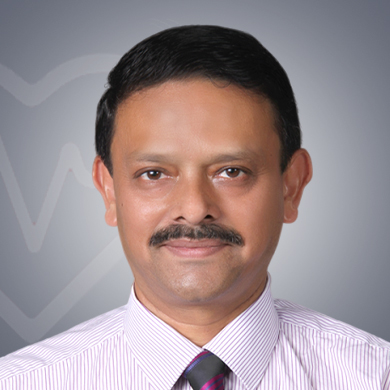
Neurosurgeon
Ajman, United Arab Emirates25 Years of experience
Speaks: English
A neurosurgeon is a medical specialist who diagnoses and treats conditions affecting the nervous system, including the brain, peripheral nerves, spinal cord, and spine. Neurosurgeons offer non-operative as well as surgical treatment to patients. Here is a list of some of the conditions Dr. Hilol Kanti Pal treats:
Neurological conditions produce different symptoms ranging from mild to severe. You should never ignore any such symptoms because these may lead to severe results if left unaddressed. Some of the signs and symptoms that neurological disorders can produce are listed below.
Neurological disorders can cause mixed symptoms, such as difficulties in moving, speaking, learning, swallowing, breathing. According to brain specialists, there are more than 600 neurologic diseases that cause mild to severe symptoms. Having a neurological disease could have a deep impact on the patient’s life. It is very important that a person should seek medical advice from a neurologist.
If you wish to see Dr Hilol Kanti Pal in his clinic/hospital, you can visit him between 11 am and 5 pm (Monday to Saturday). The doctor doesn’t work on Sunday. Sometimes, the doctor may not be available on the working days, so it is always suggested that you confirm the doctor’s availability before you visit him.
The popular procedures that Dr. Hilol Kanti Pal performs are listed below:
Dr. Hilol Kanti Pal is a renowned neurosurgeon who is known for his patient-centric approach and high success rate. The doctor evaluates the condition of the patient completely before performing any procedure to understand the risk associated with the procedure. With vast experience in performing even the most complex cases with high precision and accuracy, the doctor follows medical protocols in order to ensure patient safety. Also, the doctor is abreast with the latest techniques.

Share Your Experience about Dr. Hilol Kanti Pal

Neurosurgeons provide surgical treatment for the conditions of the brain and spine. They are considered some of the highly experienced and trained specialists in medicine and are involved in consulting with other doctors about various cases. Neurosurgeons treat people with a range of neurological issues, such as lower back pain, brain tumor, carpal tunnel syndrome, and peripheral nervous system disorders. Neurosurgeons work both in private and public hospitals. They also see patients in a clinic or surgery. They work closely with specialists and health professionals as part of a medical team, such as a critical care team or a hospital stroke team.
Diagnosis tests act as an important tool to find out the condition(s) a patient is suffering from. So, a neurosurgeon will ask you to get a few tests done so that they get to know the cause of the symptoms which further helps in finding the condition the patient is suffering from. Based on the diagnosis, the doctor can start appropriate treatment. For a complete evaluation of your condition, you have to undergo neurological examination which may include the following:
Below are some tests that a neurosurgeon may recommend for the diagnosis of the conditions of the nervous system.:
Here are some of the common signs that you must seek the medical assistance of a neurosurgeon:
Dealing with the entire nervous system, neurosurgeons treat all the parts of the body that are affected by nerve issues. They do complex surgeries on the brain. Before starting treatment, they diagnose patients' symptoms and design minimally invasive treatment plans.